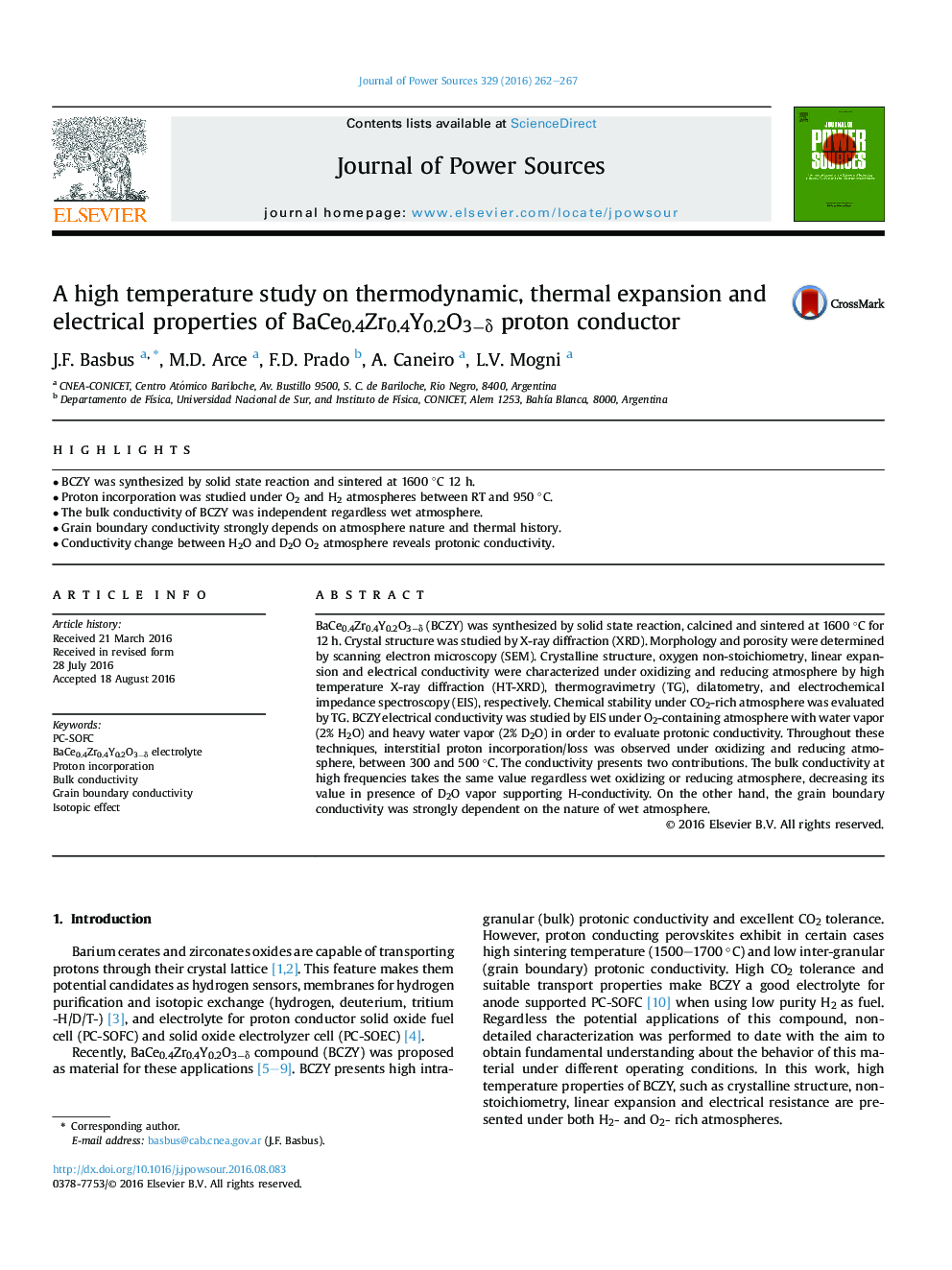| Article ID | Journal | Published Year | Pages | File Type |
|---|---|---|---|---|
| 1283425 | Journal of Power Sources | 2016 | 6 Pages |
•BCZY was synthesized by solid state reaction and sintered at 1600 °C 12 h.•Proton incorporation was studied under O2 and H2 atmospheres between RT and 950 °C.•The bulk conductivity of BCZY was independent regardless wet atmosphere.•Grain boundary conductivity strongly depends on atmosphere nature and thermal history.•Conductivity change between H2O and D2O O2 atmosphere reveals protonic conductivity.
BaCe0.4Zr0.4Y0.2O3−δ (BCZY) was synthesized by solid state reaction, calcined and sintered at 1600 °C for 12 h. Crystal structure was studied by X-ray diffraction (XRD). Morphology and porosity were determined by scanning electron microscopy (SEM). Crystalline structure, oxygen non-stoichiometry, linear expansion and electrical conductivity were characterized under oxidizing and reducing atmosphere by high temperature X-ray diffraction (HT-XRD), thermogravimetry (TG), dilatometry, and electrochemical impedance spectroscopy (EIS), respectively. Chemical stability under CO2-rich atmosphere was evaluated by TG. BCZY electrical conductivity was studied by EIS under O2-containing atmosphere with water vapor (2% H2O) and heavy water vapor (2% D2O) in order to evaluate protonic conductivity. Throughout these techniques, interstitial proton incorporation/loss was observed under oxidizing and reducing atmosphere, between 300 and 500 °C. The conductivity presents two contributions. The bulk conductivity at high frequencies takes the same value regardless wet oxidizing or reducing atmosphere, decreasing its value in presence of D2O vapor supporting H-conductivity. On the other hand, the grain boundary conductivity was strongly dependent on the nature of wet atmosphere.
